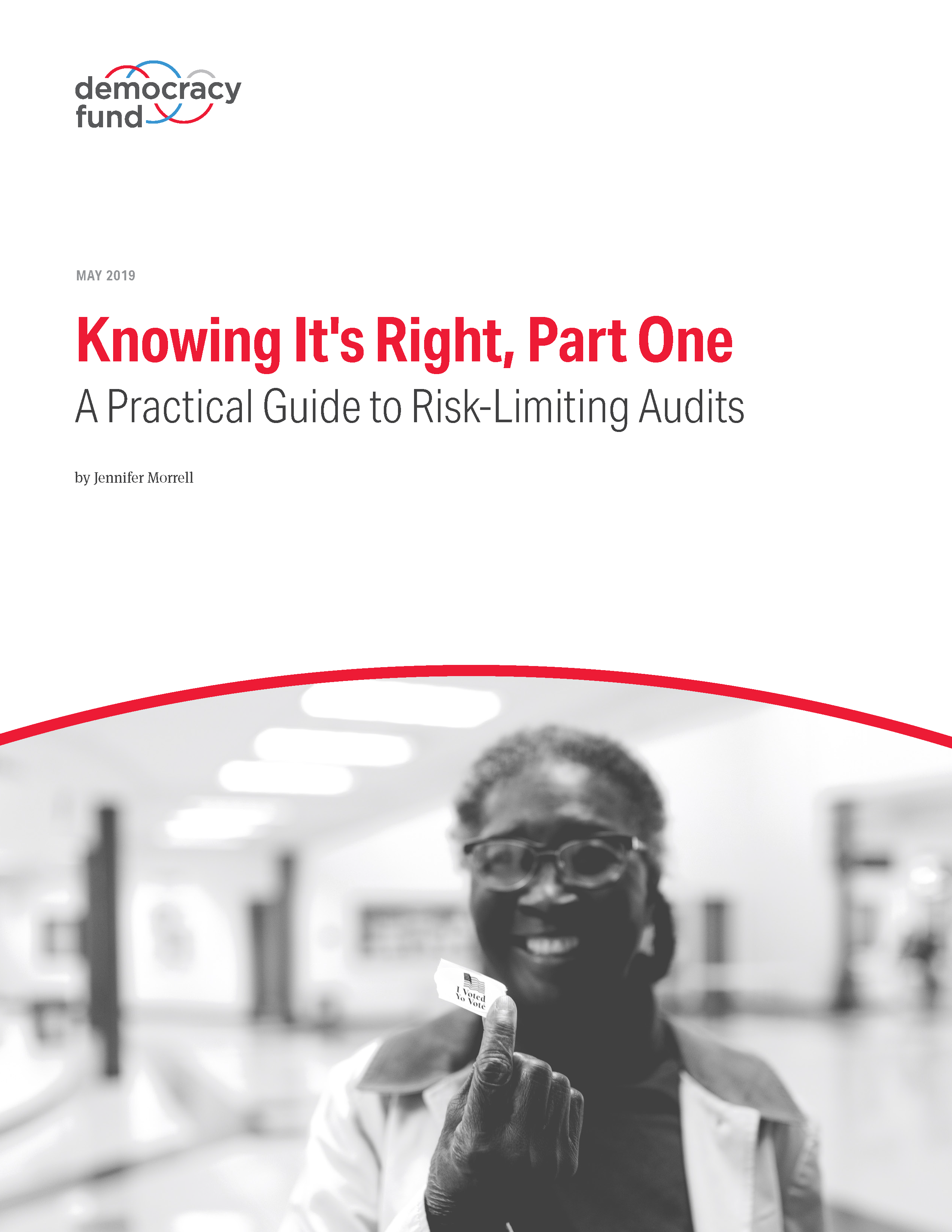In the U.S. we use voting machines to count the votes. Most of the time they’re very accurate indeed, but they can make big mistakes if there’s a bug in the software, or if a hacker installs fraudulent vote-counting software, or if there’s a misconfigured ballot-definition file, or if the scanner is miscalibrated. Therefore we need a Risk-Limiting Audit of every election to assure, independently of the voting machines, that they got the correct outcome. If your election official picks a risk-limit of 5%, that means that if the voting system got the wrong outcome, there’s a 95% chance that the RLA will correct it (and there’s a 0% chance the RLA will mess up an already-correct outcome).
But how does one conduct an RLA? The statistics are not trivial; the administrative procedures are not obvious–how do you handle all those batches of paper ballots? And every state has different election procedures, so there’s no one-size-fits all RLA method.
Two good ways to learn something are to read a book or find an experienced teacher. But until recently, most (but not all) papers about RLAs were difficult to understand for the election-administrator audience, and practically no one had experience running RLAs because they’re so new.
That’s changing for the better. More states are conducting RLA pilots, that means more people have experience designing and implementing RLAs, and some of those people do us the public service of writing it down in a handbook for election administrators.
Jennifer Morrell has just published the first two parts of a guide to the practical aspects of RLAs: what are they, why do them, how to do them.


Knowing It’s Right, Part One: A Practical Guide to Risk-Limiting Audits. A high level overview for state and local stakeholders who want to know more about RLAs before moving on to the implementation phase.
Knowing It’s Right, Part Two: Risk-Limiting Audit Implementation Workbook. Soup-to-nuts information on how election officials can conduct a ballot-comparison audit.
I really like these manuals. And if you’re looking for experts with real experience in RLAs, in addition to Ms. Morrell there are the authors of these experience reports on RLA pilots:
Orange County, CA Pilot Risk-Limiting Audit, by Stephanie Singer and Neal McBurnett, Verified Voting Foundation, December 2018.
City of Fairfax,VA Pilot Risk-Limiting Audit, by Mark Lindeman, Verified Voting Foundation, December 2018.
And stay tuned at risklimitingaudits.org for reports from Indiana, Rhode Island, Michigan, and perhaps even New Jersey.
